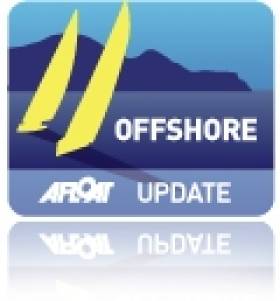Displaying items by tag: Perpetual Loyal
Perpetual Loyal Hits 'Something', Retires From Sydney–Hobart Yacht Race
#rshyr – One of the super maxis vying for line honours in the Rolex Sydney Hobart Yacht Race, Anthony Bell's Perpetual Loyal, has retired and is returning to her home club at Rose Bay in Sydney.
The crew believes the yacht may have hit something at about 9 pm last night (2100 AEDT), the hull started delaminating and the yacht took on water in the bow.
The crew is safe and expected to arrive at port in about 24 hours.
The extent of the damage will not be known until the yacht is out of the water.
Understandably, the crew is "devastated".
Perpetual Loyal advised the Cruising Yacht Club of Australia it was retiring with hull damage just after 0800 AEDT today when she was east of Eden.
Broken rudders, sail and hull damage rendered in a tough opening night's southerly have forced eight yachts to retire in less than 20 hours of racing.
The retirees are Tina of Melbourne, Bear Necessity, Willyama, Last Tango, Occasional Coarse Language Too, Triton, and Brindabella and Perpetual Loyal.
Rambler We Hardly Know You....
Last time the Irish maritime community were paying full attention to the super-maxi Rambler 100, she was white all over, she'd no keel, and she was upside down after her capsize near the Fastnet Rock during the race of 2011 writes WM Nixon.
Now she's sailing again in full racing trim. But Rambler, we hardly know you. You're right way up. Your canting keel is presumably very securely in place. And you're black, black, BLACK.
The new campaigner who has undertaken the massive refurbishment – if that's the right word – is Australian owner-skipper Anthony Bell. The restoration was done in New Zealand, where the big Juan K-designed machine was built by Cookson's in the first place, but everything about the boat's current career will be Australian-centred.
Her official launch earlier this month was performed by the Oz Prime Minister Tony Abbott, and the boat is now Perpetual LOYAL in a sponsorship linkup between two leading Australian brands. And of course the Sydney-Hobart Race on December 26th will be the debut par excellence, for despite being around for quite a few years now, even while being constantly up-dated the big lady has never done the dash to Tasmania.
So naturally the battle for line honours between current record-holder, the 100ft Wild Oat XI (owned by 35th America's Cup Challenger of Record Bob Oatley) and Perpetual Loyal is going to grab the headlines. But Wild Oats' current up-grade programme suffered a recent serious setback with the "catastrophic failure" of a new large lighter mast.
However, for Perpetual LOYAL aka Rambler Re-born, it's all systems go. Although Anthony Bell is himself has a CV of three Hobart races, he has signed on 29-races veteran Michael Coxon as sailing master, legendary American techno-ace Stan Honey is navigator, and the afterguard includes Olympic Gold Medallist and America's Cup superstar Tom Slingsby.
With entries looking to surge comfortably over the hundred mark, it has all the makings of a vintage Sydeny-Hobart, as there'll be a particularly good turnout among the biggies. Further down the fleet, Irish interest will also focus on the boats of the Round-the-World Clipper Fleet, taking part in the Hobart race for the first time. This a good move as it makes the Knox-Johnston project much more part of mainstream sailing, and the man himself will be navigating a former clipper boat in the race too.
But each Hobart race proves to be very much a case of horses for course, and over the years former CYCA Commodore Matt Allen (a veteran of 23 races) has concluded that a potent 60 footer offers the best all-round chance for the Tattersall's Cup, the prized troiphy for the overall handicap win. His new Carkeek 60 Ichi Ban is barely out of the wrappers after arriving from the Matt Allen-owned building facility in Dubai. With the looks of an up-dated and enlarged TP52, and current Australian champion offshore skipper Gordon Maguire on the helm, Ichi Ban might well be worth a flutter over Christmas.






























































